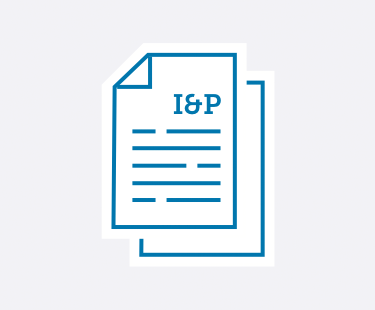

Learn practical strategies to handle emerging trends and leadership challenges in private schools.
No matter if you’re a School Head, Admission Director, Development Director, Board member, or any other private school administrator—Ideas & Perspectives®, ISM’s premier private school publication, has strategic solutions for the pervasive problems you face.
- Tuition not keeping pace with your expenses? In I&P, explore how to use strategic financial planning to create your budget and appropriately adjust your tuition.
- Enrollment dropping off? Discover how to implement the right admission and enrollment management strategies that engage your community—and fill your classrooms.
- Trouble retaining teachers? Learn how you can best support your teachers using ISM’s Comprehensive Faculty Development framework. Your faculty members will become more enthusiastic about their roles—which ultimately improves student outcomes.
- Fundraising campaigns not as successful as you’d hoped? Implement ISM’s practical advice and guidance to build a thriving annual fund, construct an effective capital campaign, and secure major donors—no matter your community size or location.
- Not sure how to provide professional development—for you and your staff? Learn ways to develop and fund a successful professional development strategy. You can improve teacher-centered satisfaction and growth, which in turn strengthens student-centered learning.
- Problematic schedule? You can master the challenges of scheduling with the help of ISM’s practical advice, based on our experience with hundreds of schools and our time-tested theories.
- And so much more.
I&P has shared targeted research, up-to-date insight, and sound theory with school leaders since 1975. More than 8,500 private school decision-makers find the answers to their schools’ administrative and governance matters in our advisory letter. We give you the strategic answers you need.
As an ISM Silver or Gold member, you not only receive issues online and in print 10 times a year, but you have access to 900+ articles in our web archive. Need help? It’s at your fingertips! Learn more and sign up for ISM's membership here.
Search
See the articles from our latest issue of Ideas & Perspectives.
Requests for Employee Information: What’s Your Policy?
Volume 43 No. 1 // January 17, 2018
The School Head is served a subpoena—a local attorney requests the personnel file of his client, your school’s former Admission Director. Her ex-husband has custody of their children and is gathering information for a child support hearing. What do you do now?
1. Already a member? Click here to login.
2. Not a member? Click here to become a member.
3. Not sure? We'll help you figure it out.
The Problem(s) With Teacher Evaluation
Volume 43 No. 1 // January 17, 2018
Every school must be able to answer this question: How do we assure that we have a great faculty to deliver the mission with excellence, and ultimately increase student performance, satisfaction, and enthusiasm? While the answer, “with an effective teacher evaluation process,” is a common response, a significant problem arises—teacher evaluation processes are completely ineffective. Large-scale research has found schools do not accurately discriminate between effective and ineffective teachers,1 nor do they drive professional development or improve student outcomes.2 In our travels, ISM Consultants have found few schools that serve as exemplars in this area. Your school likely struggles to establish an effective, consistent, and culture-enriching evaluation process.
1. Already a member? Click here to login.
2. Not a member? Click here to become a member.
3. Not sure? We'll help you figure it out.
Preserving the Trust
Volume 43 No. 1 // January 16, 2018
As President of the Board, you have accepted leadership of the Trustees charged with preserving the school’s essential purposes and outcomes for future generations of students and families. What exactly comprises those “essential purposes and outcomes?” How, exactly, should those relate to the founding group’s seminal formulations? How do changing societal conditions and circumstances play into and perhaps transform those seminal formulations?
1. Already a member? Click here to login.
2. Not a member? Click here to become a member.
3. Not sure? We'll help you figure it out.
Quasi-Endowment
Volume 42 No. 16 // December 29, 2017
A confusing element of a school’s accounting is the bald statement, “We have a million (or some other number) dollars in endowment.” What does that mean? In most endowments that ISM examines, that number includes different elements, each of which has distinct characteristics. In a previous article, we discussed true endowment. Here we think about quasi-endowment. As the Business Manager or Chair of the Finance Committee, how do you think about this money? How does the Finance Committee think about it? How do you educate the Board about it in its strategic planning process?
1. Already a member? Click here to login.
2. Not a member? Click here to become a member.
3. Not sure? We'll help you figure it out.
ISM Stability Marker No. 1 Revisited: Cash Reserves, Debt, and Endowment
Volume 42 No. 16 // December 29, 2017
Cash reserves, coupled with low debt/no debt and endowment, have always ranked either first or second among the ISM Stability Markers®. These indicators of institutional sustainability, in widespread use now for more than two decades, serve as fundamental points of departure in all private school leadership-level strategic conversations and plans. ISM suggests that you, as Board President, Finance Chair, School Head, or Business Manager, as a matter of basic organizational discipline, monitor the status of the three components in ISM Stability Marker No. 1.
1. Already a member? Click here to login.
2. Not a member? Click here to become a member.
3. Not sure? We'll help you figure it out.
Summary and New Dimensions in Our Measure of Well-Being on Executive Leadership
Volume 42 No. 16 // December 29, 2017
ISM has studied the interrelationships among executive leadership, well-being, and school performance. In the previous three articles in this series, we have confirmed: ISM’s existing measure of executive leadership and the Head’s level of flourishing correlate with key school performance variables (school stability, financial strength, enrollment demand, and faculty culture); that neither the School Head’s experience in the field of education nor cumulative experience as School Head is related to the key school performance variables. There is no evidence a school improves with the Head's experience.The Head’s current length of tenure, however, was correlated with the school’s financial strength; enrollment demand is related to the strength of leadership and well-being of the School Head; and, the School Head’s level of professional support and well-being significantly influences the faculty culture—a central construct that enhances the student experience and the enrollment management process.
1. Already a member? Click here to login.
2. Not a member? Click here to become a member.
3. Not sure? We'll help you figure it out.
Avoid the Danger of Misinterpreting Research
Volume 42 No. 15 // December 1, 2017
We live in an information age where we are inundated daily with information on multiple devices. News feeds quickly summarize research from various sources, and weeding through all this information can be daunting. As a result, we often forget to put on our critical reading glasses.
1. Already a member? Click here to login.
2. Not a member? Click here to become a member.
3. Not sure? We'll help you figure it out.
Head Support and Evaluation Committee: Reporting to the Board
Volume 42 No. 15 // December 1, 2017
The Head Support and Evaluation Committee (HSEC) is the link between strategy and operations. It is a safe place for the Head to report ongoing progress toward his or her goals, and for the HSEC to advise, support, and hold the Head to account.1 But what is the relationship of the HSEC to the Board? After all, the reason for the HSEC is the Board’s inability to evaluate the Head. But, at the same time, the Board is the Head’s employer and has a “right to know” and ensure the Head is held accountable.
1. Already a member? Click here to login.
2. Not a member? Click here to become a member.
3. Not sure? We'll help you figure it out.
Carrying Out the Annual Administrative Agenda
Volume 42 No. 15 // December 1, 2017
In a previous article, we outlined the process for developing the annual administrative agenda. This, the fourth in the series on setting annual agendas, details how to orchestrate the administrative agenda in subsequent Leadership Team meetings.
1. Already a member? Click here to login.
2. Not a member? Click here to become a member.
3. Not sure? We'll help you figure it out.
True Endowment
Volume 42 No. 15 // December 1, 2017
What is the nature of true endowment? We note that true endowment is distinguished from quasi-endowment (which will be dealt with in a subsequent article). From your view as School Head, Business Manager, or Finance Committee member, what are the issues you should be considering?
1. Already a member? Click here to login.
2. Not a member? Click here to become a member.
3. Not sure? We'll help you figure it out.


